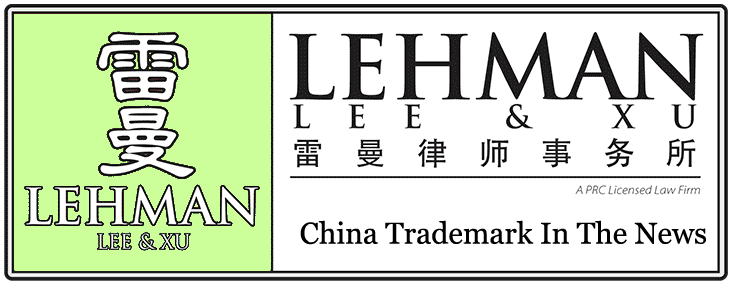

 |
LEHMAN, LEE & XU China Lawyers |
China Trademark In The News |
June 24, 2015 |
|
The China Law News keeps you on top of business, economic and political events in the China. |
In the News |
Chinese Court Stuns New Balance with $16 Million Verdict: Lessons on Doing Business in China |
On April 24, 2015, Guangzhou Municipal Intermediate People’s Court in south China’s Guangdong Province stunned Xinbailun Trade (China) Co., the local sales company for the well-known U.S. sports brand New Balance, with a $16 million verdict for violating the trademark rights of a Chinese individual, Zhou Yuelun (Zhou or plaintiff). In addition to the $16 million verdict, to avoid further consumer confusion, the Court ordered the Chinese affiliate of New Balance to stop using the “Xin Bai Lun” term to market its product in China and required them to publicly apologize for the harm caused to Zhou. Cultural and Linguistic InconsistenciesSome cultural and linguistic explanation is necessary to understand this landmark decision. The name used by the New Balance affiliate was 新百倫 pronounced “Xin Bai Lun.” “Xin” means “New” in Chinese and “Bai Lun” is a phonetic translation of “Balance.” The plaintiff owns the trademarks 百倫 pronounced “Bai Lun” and 新百倫 pronounced “Xin Bai Lun.” “Bai Lun” was registered as a trademark in China in 1996 for certain merchandise (in International Class 25), including “clothes, footwear, and headgear.” International trademark classification and the headings of the international trademark classes are established by the Committee of Experts of the Nice Union. Thus, Class 25 is essentially the same in the United States when used by the U.S. Patent and Trademark Office. China’s First-to-File System and Its Effects on the LawsuitUnlike in the United States, where trademark rights are based on use, Chinese law does not recognize or protect a trademark unless it is registered with the Chinese Trademark Office (CTO). This Court’s decision highlights a significant lesson about use of Chinese character marks and the importance of filing early in China, irrespective of the marks’ use in China. FindingsThe Court initially determined that the plaintiff’s and the defendant’s products were substantially similar, thereby providing a basis for the trademark infringement/dilution claims. The Court then found that the “Bai Lun” trademark registered in 1996. Since the CTO makes trademark filings and registrations readily available to the public, the Court opined that the defendants should have known that the “Bai Lun” and “Xin Bai Lun” marks had previously registered in the name of the plaintiff. Furthermore, the Court found that New Balance opposed the registration of the plaintiff’s trademark application for “Xin Bai Lun” in 2007, and obviously was aware of the dispute. Finally, the Court determined that since New Balance was aware of the existence of the trademarks of “Bai Lun” and “Xin Bai Lun,” and since New Balance continued to trade on the plaintiff’s registered trademarks, they did so in bad faith. In view of these findings, the Court rejected New Balance’s argument for fair use and first use. ConclusionIt has been a common practice for U.S. companies to adopt a Chinese name when entering the ever-expanding Chinese market. The older convention in China was for the company to adopt a phonetic translation, such as “Suo Ni” (Sony) and “Mai Dang Lao” (McDonald’s). As the Chinese consumers have become more sophisticated, for marketing reasons a straightforward phonetic translation is sometimes foregone and in this case a mixture of translated meaning (“Xin” = “New”) and phonetic (“Bai Lun” = “Balance”) was adopted. Companies struggle to navigate between using a name that is marketable in a foreign language and yet recognizable to the consumers to connect to the original U.S. brand name. From a practical standpoint, companies should ensure that their choice of names to be used in China – the use of names (on websites or press releases) and the products associated – go through trademark clearance and due diligence procedures just as they would in the United States. As the Chinese market continues to expand and more U.S. companies sell their products in China, it is to be expected that the landscape of intellectual property claims will expand as well.
|
8 Things They Didn’t Teach You at the INTA Conference in San Diego this Year |
Hope all is well, I am back in China following the INTA meeting in San Diego. On my long plane ride back I jotted down these random thoughts and recollections I would like to share with you based on my perspective of attending INTA over decades. There is always something to learn.
If I could conduct a conference and only have 8 lessons that I didn’t teach, I would consider it a huge success. I am continually impressed with the INTA’s remarkable planning as to the uploading of data to their portal, how did they know I would only be able to make it to only two sessions? I was glad to watch all of the material online once I got home.
Edward Lehman
|
|
|
|
|
| Proud Member of |